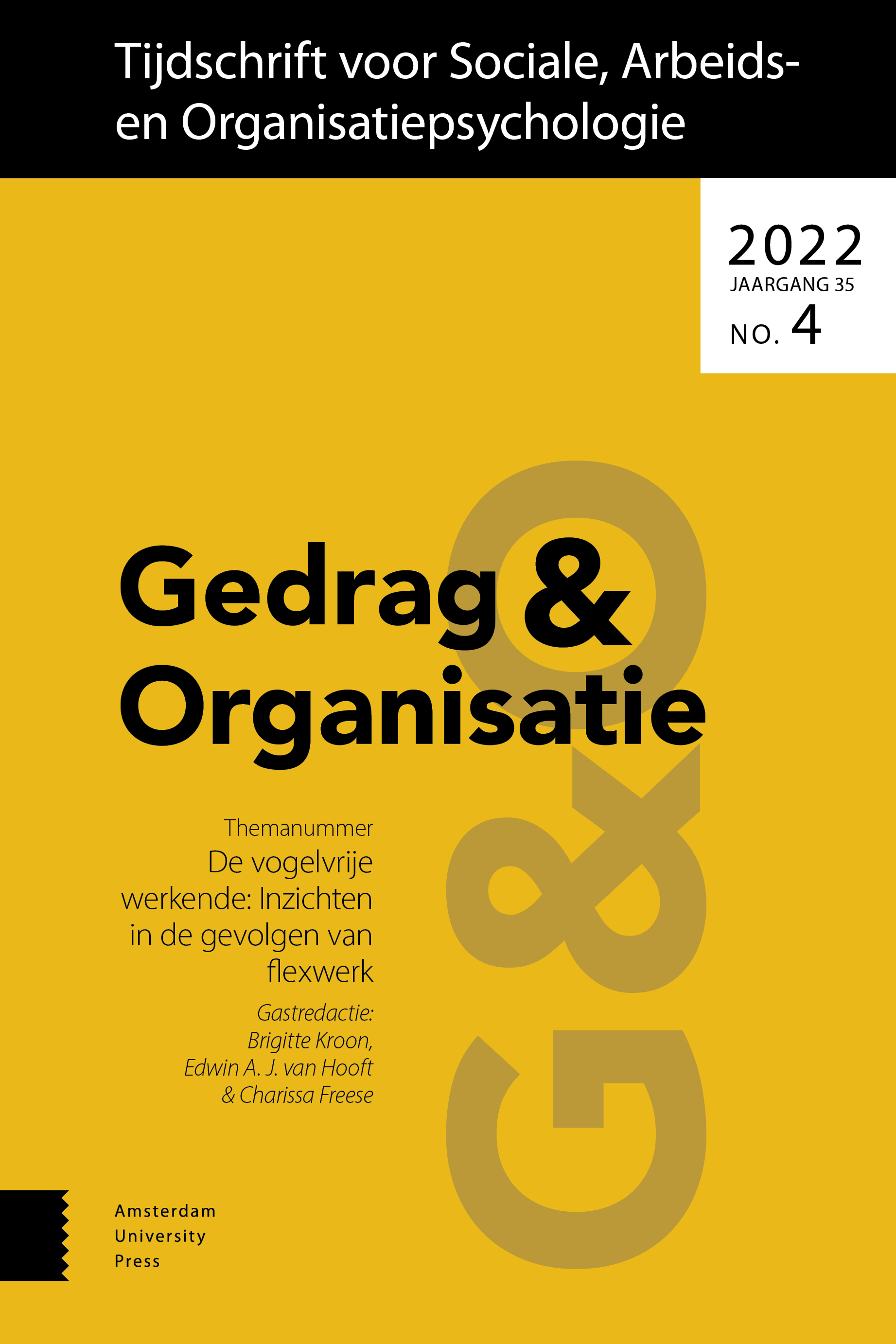
Full text loading...
Het aandeel tijdelijke contracten blijft wereldwijd in rap tempo toenemen. Uit onderzoek weten we dat de baanonzekerheid die doorgaans gepaard gaat met tijdelijke contracten, schadelijk kan zijn voor de gezondheid en werkprestaties van werknemers. In dit onderzoek gaan we op zoek naar manieren waarmee tijdelijke werknemers hun gevoelens van baanonzekerheid en de negatieve gevolgen daarvan kunnen beperken. Wij onderzoeken allereerst of de relatie tussen de inschatting van mogelijk baanverlies (cognitieve baanonzekerheid) en mentale belasting wordt gemedieerd door de zorgen over mogelijk baanverlies (affectieve baanonzekerheid). Vervolgens onderzoeken we of, en hoe, actief copinggedrag en passief copinggedrag deze indirecte relatie kunnen modereren. Uit de resultaten, gebaseerd op een vragenlijstonderzoek onder 141 tijdelijke werknemers, blijkt dat er een positieve indirecte relatie is tussen cognitieve baanonzekerheid en mentale belasting via affectieve baanonzekerheid. Daarnaast blijkt dat actief copinggedrag de relatie tussen affectieve baanonzekerheid en mentale belasting dusdanig kan verzwakken, dat de indirecte relatie wegvalt. Passief copinggedrag houdt de indirecte relatie echter juist in stand. Tijdelijke werknemers kunnen dus mogelijk eigenhandig de mate van mentale belasting die voortkomt uit affectieve baanonzekerheid, verminderen door meer actief copinggedrag en minder passief copinggedrag te vertonen.

Article metrics loading...

Full text loading...
References


Data & Media loading...

